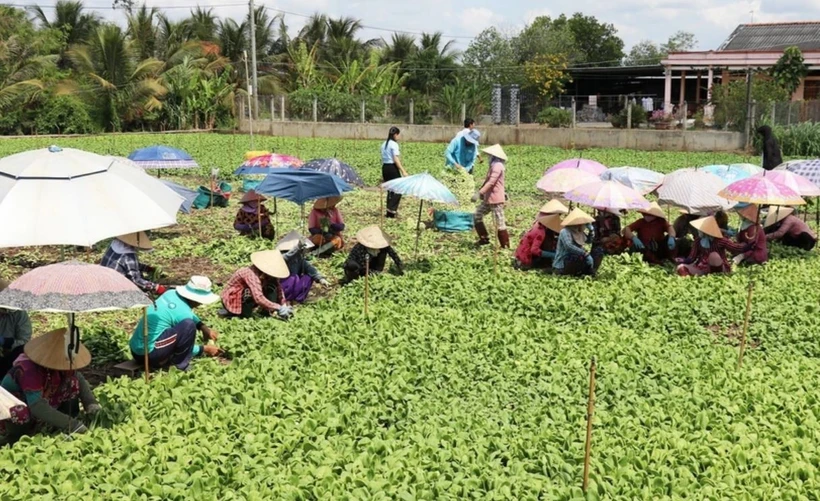The National Statistics Office under the Ministry of Finance will conduct a nationwide rural and agricultural census from July 1-30.
 |
| The National Statistics Office under the Ministry of Finance will conduct a nationwide rural and agricultural census from July 1-30. Photo: VNA |
Prime Minister Pham Minh Chinh issued Decision No. 484/QD-TTg on June 7, 2024, on the survey, one of the three largest statistical censuses in Vietnam, held every ten years. The census aims to collect comprehensive information on agriculture, forestry, fisheries and the status of rural development nationwide.
Director of the National Statistics Office Nguyen Thi Huong emphasised the significance of the census, especially in the context that Vietnam is promoting the transformation of agriculture and rural areas towards modernity and sustainability, which requires a database strong enough to serve policy making, analyse development trends, serve the national target programmes, and meet new requirements of international integration.
The 2025 census results are expected to help Vietnam assess the current situation, analyse trends, build plans and strategies for sustainable development for rural areas and the agro-forestry-fishery sector, and then improve the living standards of rural residents.
In addition, the results will serve studies assessing labour scale and structure in rural areas and the sector, changes in rural infrastructure, the implementation of some contents of national target programmes, as well as international comparisons.
The census will cover all households engaged in agriculture, forestry, and fisheries, including both self-producing and hired labour households, production farms, and rural areas.
According to the 2016 census, Vietnam had 8,978 communes and 78,134 villages as of July 1, 2016, representing decreases of 93 communes and 1,006 villages compared to July 1, 2011.
In the whole country, 8,927 communes had car roads connecting commune People’s Committees with respective district People’s Committees, accounting for 99.4% of total number of communes, up 0.8 percentage points compared to that in 2011.
The electricity supply had reached out to all the communes and most of the villages, according to the findings.
Up to 8,921 communes nationwide had kindergartens, accounting for 99.4% of total number, up 3.1 percentage points from 2011.
The general education school system is restructured, to be suitable to the changes in the number of students. In 2016, 8,915 communes had primary schools, representing 99.3% of the total; 8,227 communes had secondary schools, made up 91.6% of the total; and 1,138 had high schools, accounting for 12.7%.







